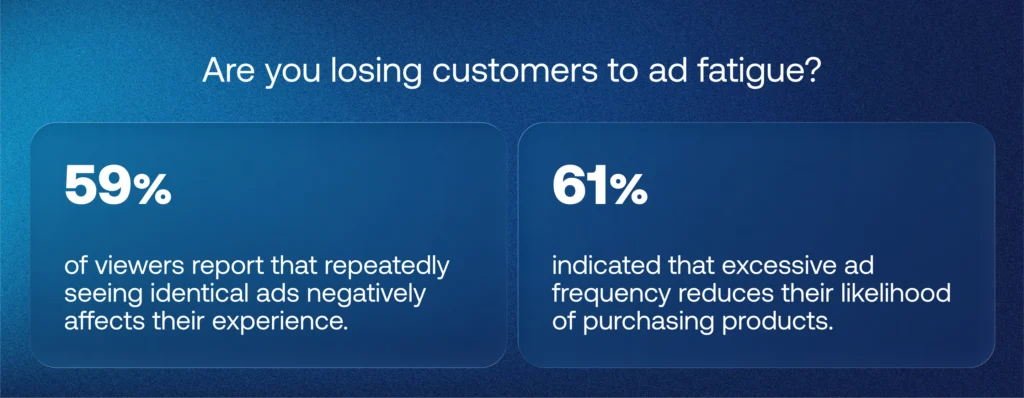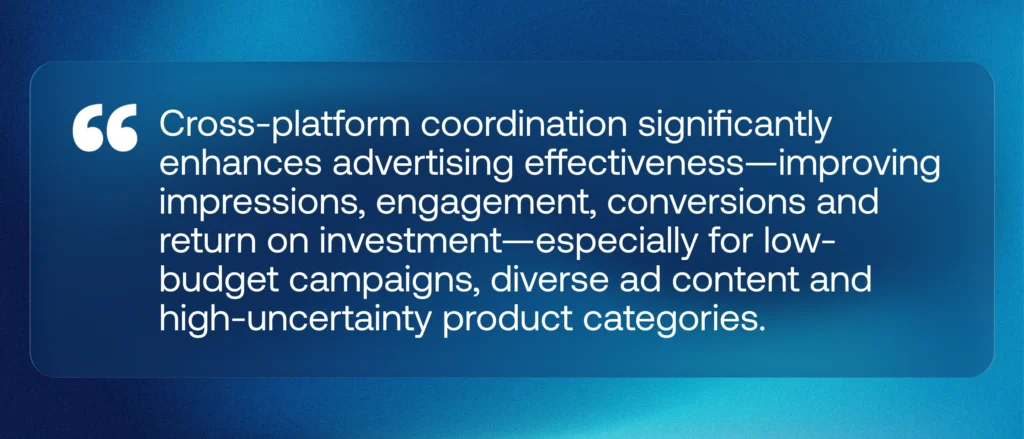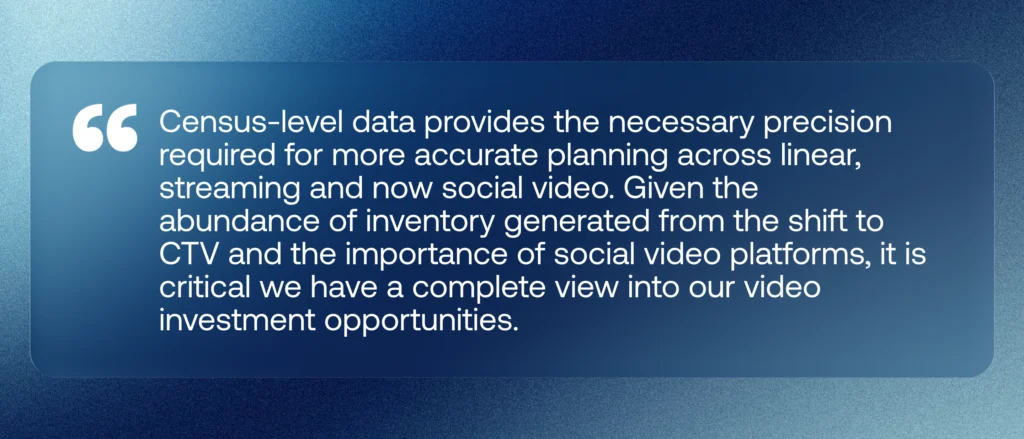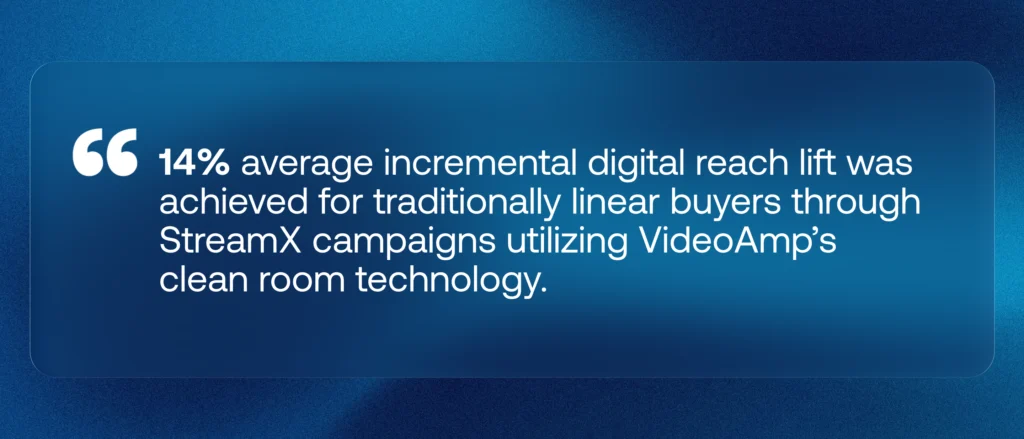The Frequency Trap: How to Avoid Cross-Platform Planning’s Blind Spot

Cross-platform planning should help you reach more people, cut waste and drive better results. But here’s what’s happening instead: Many advertisers unknowingly fall into a costly blind spot called the frequency trap.
Think of it like throwing a party and only inviting people from your immediate neighborhood multiple times. You end up with the same guests showing up while missing entire communities who would love to attend.
The reality is, this happens when you plan media in silos. You focus on impressions instead of audiences. You risk bombarding the same viewers with the same message while entire segments of your intended audience never see the ad.
Why does this matter more than ever? As streaming continues to fragment viewing habits and audiences engage across multiple screens simultaneously, traditional planning approaches simply can’t keep up. The result isn’t just inefficient. It’s expensive. Every wasted impression is ad spend that could have reached new customers, boosted brand lift and driven actual revenue.

Source: PR Newswire, New Survey from AD-ID by The Harris Poll Reveals Ad Fatigue is Negatively Impacting Viewers’ Purchasing Decisions, October 9, 2024.
So, how can you make your budget work harder? Here’s how to adapt an audience-first approach that turns wasted impressions into efficient reach.
In this article, we’ll cover:
- How to spot the frequency trap
- Why each symptom hurts your business
- A planning approach that gives you the full picture
- The right technology for cross-platform planning
How to spot cross-platform planning inefficiencies (and why they matter)
You can’t avoid the frequency trap entirely, but you can catch it early. Here are the warning signs and what they mean for your business:
Your reach-to-impression ratio looks off
If a campaign delivers a high number of impressions but only modest reach, you may be oversaturating a small audience on a few networks or platforms. Meanwhile, large swaths of potential customers remain untouched, preventing you from expanding your market presence.
Engagement rates are dropping
You’ve likely stepped into the frequency trap if engagement signals, like click-through rates and video completions, drop off as a campaign progresses. Overserved audiences tune out, dragging down efficiency and driving up cost per meaningful interaction.
Brand-lift varies wildly across channels
Brand-lift or recall metrics that vary significantly between platforms are a sign that fragmented planning has created uneven messaging impact. Some channels reach your target audience, while others drain your budget without helping you improve brand perception.
Certain segments are getting hammered
Some demographics or geographic segments having more exposure to a campaign than planned is another sign of cross-platform planning inefficiency. This issue happens when frequency controls aren’t unified, resulting in wasteful duplication and diminishing returns within the same audiences.

Source: SSRN, Cross-Platform Complementarity in Digital Advertising Ecosystems: Evidence from Field Data and a Randomized Experiment, September 11, 2025.
These symptoms don’t just hint at cross-platform planning inefficiencies. They represent missed business opportunities. The solution? Implement a strategy that tracks audiences in a single view and shifts wasted spend into incremental reach, higher engagement and stronger brand growth.
Beat the frequency trap with unified cross-platform planning
A structured approach, supported by the right tools, helps you nail optimal frequency and efficiently move high-value audiences down the funnel. Here’s how:
Start with a unified audience definition
Define your audience by combining first-party data with third-party data and use this list for every channel. When you can plan and measure against the same audience across channels, your cross-platform planning strategy delivers meaningful results. Think of this as creating a single guest list for your marketing efforts, rather than separate ones that overlap and create confusion.

Megan Pagliuca, Chief Product Officer, Omnicom Media Group (Source)
Forecast reach and frequency
Advanced planning models move beyond individual metrics to understand how each platform contributes to total audience reach. Use the insights to control over-frequency caused by viewers seeing your ad too many times and reveal true incrementality across channels.
Use cross-platform planning tools that actually work
Here’s where modern technology makes the difference. Instead of stitching together reports from different sources, forward-thinking brands use integrated planning platforms to run scenarios that show:
- How many unique viewers do you reach
- How frequency plays out across platforms
- Where budget reallocation adds reach
- How to avoid oversaturating audiences
This approach transforms guesswork into a coherent, data-driven strategy. Solutions like VideoAmp’s VXP™ provide this unified view, helping media teams see the complete picture before dollars are spent.
Connect spend with outcomes that matter
Go beyond impressions and media metrics. VideoAmp’s clean room technology enables traditionally linear buyers to discover new incremental reach opportunities in digital channels, connecting media spend directly to business growth. Advanced planning and analytics tools can tie campaigns to business campaigns like sales lift, brand consideration or site visits—that’s where true campaign value becomes visible.

Source: Marketing Dive, VideoAmp builds momentum with Warner Bros. Discovery currency deal, July 2025.
Make cross-platform planning drive business results
With the right approach, cross-platform planning answers the questions siloed buying can’t:
- What’s my campaign’s actual reach?
- How much budget did I waste overserving the same viewers?
- Where should I reallocate dollars to maximize efficiency?
The trend is clear: Modern advertising demands modern measurement. Stop chasing impressions and start focusing on business outcomes.
Our take? True cross-platform planning shows actual audience reach and frequency across platforms, helping you control oversaturation while boosting incremental reach. When you can see the complete audience journey, you can make smarter decisions about where every dollar goes.
Ready to break out of the frequency trap? Let’s talk.
